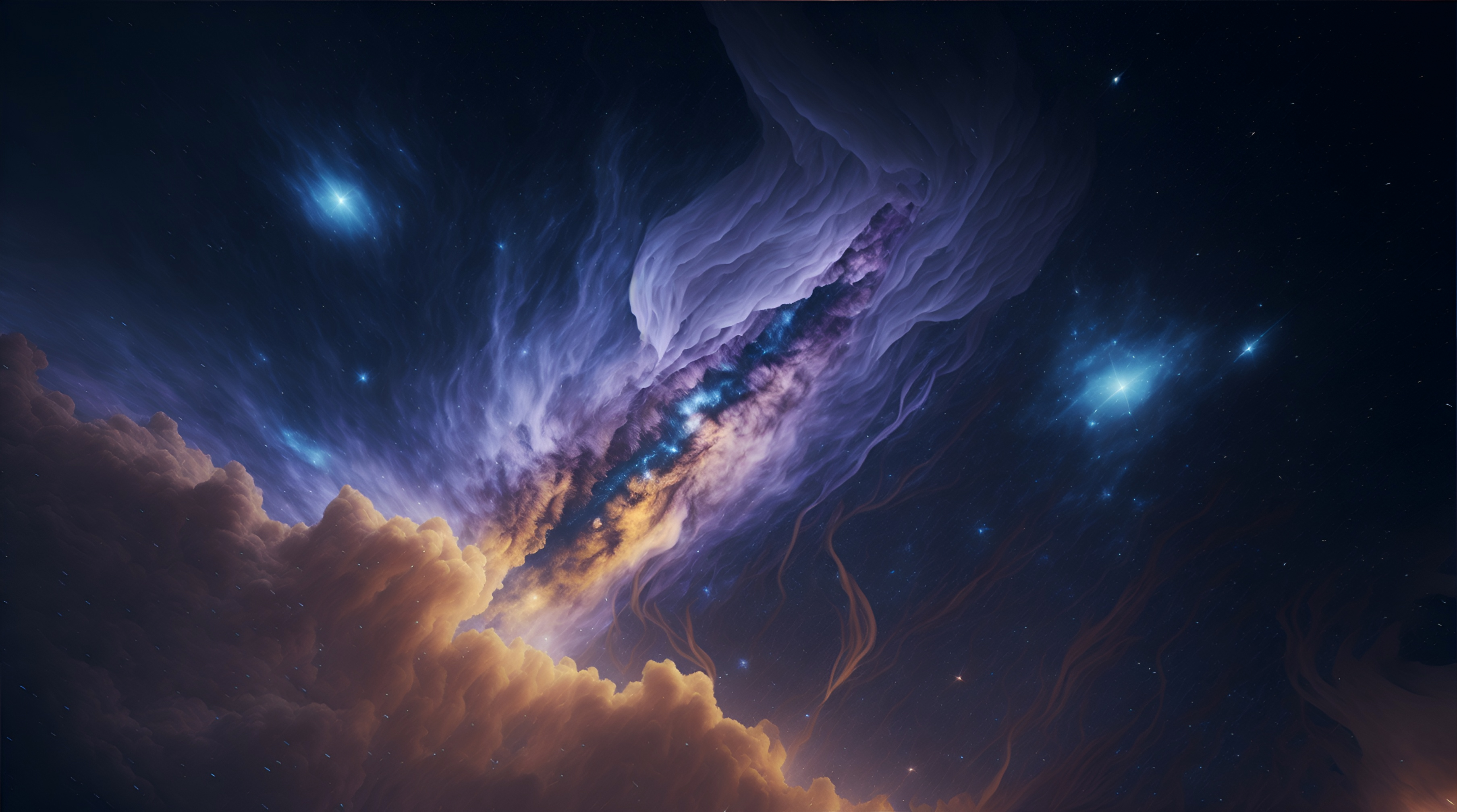What are Kirons?
Kirons, also called "plots" (mostly by humans) are supralight flows created by combinations of gravity, light, and electromagnetic waves. The specific combination varies from kiron to kiron.
Kirons form when sufficient components are in proximity and include waves on the d'nahk (Sigma) spectrum, which form bonds with and modify other waves in a weak valence. No reliable technology exists to perceive or measure from a distance the turbulence or path of a kiron but their existence can be deduced ("detected") based on the presence of spectrum combinations.
Once a kiron forms, the longer it remains in existence, the more generally predictable its path becomes. Well-established kirons with known paths are called "prevailing", and become primary navigational routes for flow-pressure drive or sail spaceships.
To think of the 'course' of a kiron, imagine a strand of yarn in a tangle of many yarn strands. It may twist back on itself, intersect with other strands at various points. Klavangi call these intersection points "d'rihren", human navigation texts refer to them as nexi. A kiron may move along any axis, change axes, and change directions on any axis. Some kirons form closed systems, simple or complex loops, called "t'nirren". Sometimes kirons branch - called hl'envv by the klavangi.
The relevant qualities of any kiron for navigational purposes are direction, intensity, turbulence and consistency.
Where kirons meet the gravitational effects of stars, systems and other object phenomena, a 'node' (klavangi: "tnayln") forms. Nodes provide areas of minimal intensity and turbulence which enable flow-pressure ships to safely enter or leave the stronger currents of the plot.
In addition to nodes, kirons may have discontinuities that produce points where transits from the central plot are possible in the absence of object phenomena. Such points, "Mr'aatx" are contraindicated for safe navigation but have been used occasionally by ships in distress, fleeing pursuit, or engaging in criminal activity.
Kirons form when sufficient components are in proximity and include waves on the d'nahk (Sigma) spectrum, which form bonds with and modify other waves in a weak valence. No reliable technology exists to perceive or measure from a distance the turbulence or path of a kiron but their existence can be deduced ("detected") based on the presence of spectrum combinations.
Once a kiron forms, the longer it remains in existence, the more generally predictable its path becomes. Well-established kirons with known paths are called "prevailing", and become primary navigational routes for flow-pressure drive or sail spaceships.
To think of the 'course' of a kiron, imagine a strand of yarn in a tangle of many yarn strands. It may twist back on itself, intersect with other strands at various points. Klavangi call these intersection points "d'rihren", human navigation texts refer to them as nexi. A kiron may move along any axis, change axes, and change directions on any axis. Some kirons form closed systems, simple or complex loops, called "t'nirren". Sometimes kirons branch - called hl'envv by the klavangi.
The relevant qualities of any kiron for navigational purposes are direction, intensity, turbulence and consistency.
- Direction is the major or prevailing flow path the kiron travels, analogous to currents - but as with atmospheric or water currents the flow direction is affected by factors such as stars, planetary bodies, comets, other strong kirons, etc. and the gravitational and other waves they generate.
- Intensity is the potential strength of the energy a kiron can generate in impelling a specific dimension of sail fabric one stet (a klavangi distance measurement approximating .86 AU) and is measurable from 2.1x10^-6 to 3.8x10^8. The klavangi created a scale of twelve degrees to describe kiron intensity, ranging from "Iyan" (Calm) to "W'ressheh" (Hurricane).
- Turbulence is the degree of chaotic changes in flow direction and pressure within the prevailing direction of the kiron. The klavangi term "Tnapin Qinv" abbreviated by Federation Naval engineers as "TQ" describes type and intensity of turbulence with a degree setting from 0/0/0 through 244/244/244, with the three descriptors measuring speed, intensity, and deviation.
- Consistency or vvrinns, describes the state of a kiron along its known course - kirons may have 'dead' spots or surges in intensity that require fast adaptation of sail configuration. The five degrees of consistency are"kn'il -continuous" "kn'enn -steady", "klleff -broken", "vhrinn -discontinuous" and "lltas -erratic".
Where kirons meet the gravitational effects of stars, systems and other object phenomena, a 'node' (klavangi: "tnayln") forms. Nodes provide areas of minimal intensity and turbulence which enable flow-pressure ships to safely enter or leave the stronger currents of the plot.
In addition to nodes, kirons may have discontinuities that produce points where transits from the central plot are possible in the absence of object phenomena. Such points, "Mr'aatx" are contraindicated for safe navigation but have been used occasionally by ships in distress, fleeing pursuit, or engaging in criminal activity.
Type
Natural



Comments